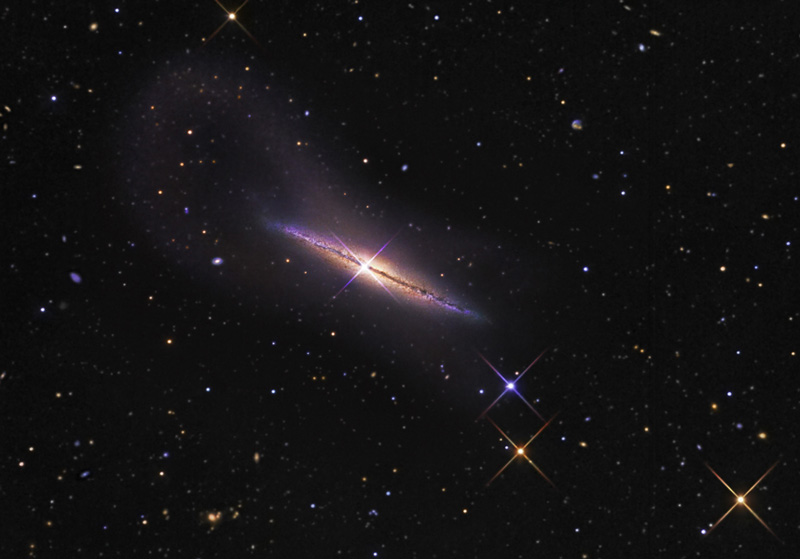
NGC 4013 and the Tidal Stream
Image Credit & Copyright: R Jay Gabany (Blackbird Observatory) - collaboration; D.Martínez-Delgado(IAC, MPIA),
M.Pohlen (Cardiff), S.Majewski (U.Virginia), J.Peñarrubia (U.Victoria), C.Palma (Penn State)
Posted on 02/07/2008 2:00:20 PM PST by sig226

Explanation: Nearly 50 million light-years away in the constellation Ursa Major, NGC 4013 was long considered an isolated island universe. Seen edge-on, the gorgeous spiral galaxy was known for its flattened disk and central bulge of stars, cut by silhouetted dust lanes. But this deep color image of the region reveals a previously unknown feature associated with NGC 4013, an enormous, faint looping structure extending (above and toward the left) over 80 thousand light-years from the galaxy's center. A detailed exploration of the remarkable structure reveals it to be a stream of stars originally belonging to another galaxy, likely a smaller galaxy torn apart by gravitational tides as it merged with the larger spiral. Astronomers argue that the newly discovered tidal stream also explains a warped distribution of neutral hydrogen gas seen in radio images of NGC 4013 and offers parallels to the formation of our own Milky Way galaxy.

again, thanks
pardon what may be an obtuse question, but in the effort to learn more inane information: why is it some of the stars (like in the photo above) are shown “twinkling” while others are not? We see 4 such stars here, among the millions and billions that exist.
Are you referring to the objects that are so bright they show diffraction effects of the internal construction of the instrument?
And you thought that was strictly Orbit gum territory, eh Dentist?
Yes, I was. Thanks.
You must be a hoot at parties.
Yup. Especially when I perform a surprise extraction.
LOL! If ever there was a reason for me to keep my mouth shut...
BTW, there are five of them - the fifth is in the upper left.
Indeed, there it is.
Disclaimer: Opinions posted on Free Republic are those of the individual posters and do not necessarily represent the opinion of Free Republic or its management. All materials posted herein are protected by copyright law and the exemption for fair use of copyrighted works.